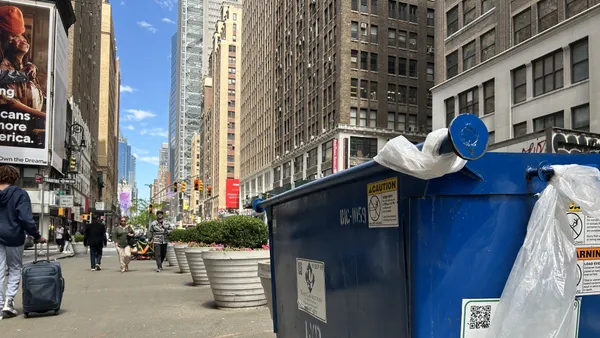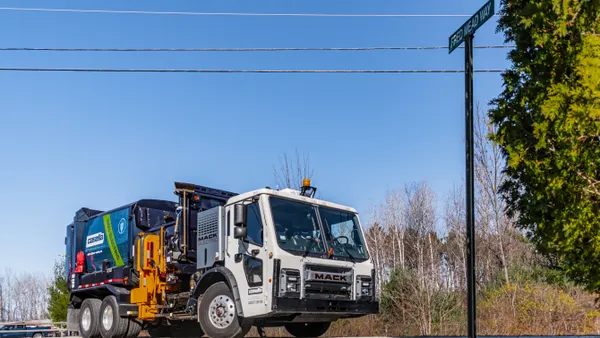Dive Brief:
- Fatality rates for refuse and recyclable material collectors declined in 2016, though the occupation still remains the fifth most dangerous in the U.S., according to the newly released Census of Fatal Occupational Injuries Summary from the Bureau of Labor Statistics (BLS).
- A total of 31 workers in this occupation died on the job last year, with a fatality rate of 34.1 per 100,000 people. This is down from 33 fatalities, at a rate of 38.8, in 2015. Transportation incidents were cited as the primary cause.
- The broader category of "waste management and remediation services," which includes other occupations besides traditional solid waste and materials management, had 67 recorded fatalities for 2016. The vast majority occurred among private sector versus government workers. Within that overall category, five fatalities were reported at solid waste landfills and one at a material recovery facility.
Dive Insight:
Given the industry's sensitivity around safety in recent years, there had been some concern that refuse collection might actually rise in the top five. Instead, each of the top four occupations — logging, fishing, piloting and roofing — saw fatality increases for 2016. This tracks with a national fatality increase for the third consecutive year to 5,190, the highest number recorded since 2008.
Other national trends included an increase in fatalities among workers age 55 and over — the highest since data was first recorded in 1992 — and the fact that foreign-born workers comprised about one-fifth of all fatalities. Private industry workplace fatalities were also up 7% from 2015.
Across all occupations, transportation incidents were the most common, accounting for 40% of all 2016 fatalities. This was followed by "violence and other injuries by persons or animals," "falls, slips, trips," and "contact with objects and equipment." While the second category may be less relevant, all of the others can be common factors in waste industry safety incidents.
This data provides a welcome counterpoint to recently released 2016 injury data showing that injury and illness rates for landfills and MRF workers were up. Fatalities for both categories are down compared to 2015, showing no direct correlation last year. Though vigilance will still be required in both areas following multiple landfill fatalities this year and an increase in staffing at some MRFs to meet China's new contamination standards. While some executives believe this confluence of events could actually improve safety by encouraging automation, it's too early to know.
Overall a decline in 2016 injury rates and fatalities among collection workers is clearly welcome news after multiple years of industry focus on that area. A growing number of states have now passed "Slow Down to Get Around" laws, training has become more common and technology is improving to act as a safeguard. All of this points to a potentially positive direction for industry safety, but the occupation's continued place on the top five list is still a reminder that companies and local governments must continue working to change the status quo.










